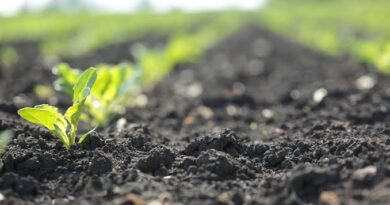Cross Breeding and Artificial Insemination in Livestock Breeding
Artificial insemination (AI) involves the collection of semen from a boar and then the introduction of semen into a sow or gilt at a later stage by means of a catheter. This contrasts with natural service where a boar mounts a sow and introduces his semen.
In the previous section, methods of pig improvement have been based on selection within breed. There is, however, another means by which the producer can attempt to genetically improve the performance. This involves cross-breeding which is the:
Exploitation of the phenomenon of heterosis, which occurs when two breed, which are genetically different, are crossed. If the cross-bred individual shows an improvement in performance above the mean of both parents it is said to exhibit hybrid- vigor or the ability to combine in one or more individuals the desirable characteristics of two existing breeds.
The higher levels of heterosis tend to occur in traits which are of lower heritability, e.g. reproductive traits.
Artificial Insemination (AI)
Artificial insemination (AI) involves the collection of semen from a boar and then the introduction of semen into a sow or gilt at a later stage by means of a catheter. This contrasts with natural service where a boar mounts a sow and introduces his semen.
The major advantage of AI is that is allows for the wider use and distribution of boars of high genetic merit. The ejaculate from on boar can be extended to inseminate up to 25 sows.
Recent advances in methods of boar semen storage make it possible for developing countries in the tropics to the very top genetic stock from developed countries (e.g. in the UK only the 5 per cent of boars performance –tested by Meat and livestock commission are eligible for entry to AI studs). This caliber of genetic material would not otherwise be available to developing countries.
Read Also: Artificial Insemination and Heat Detection in Pigs
Other benefits of AI are;
. It overcomes the need to purchase, house and feed a boar. This is particularly pertinent to the small-scale producer who cannot justify keeping a boar for a small number of sows, and who cannot afford a boar of good quality.
The effective use of AI is especially relevant where small-scale producers are involved in group or co-operative pig development schemes, and their units can be serviced from a central boar holding centre,
. It prevents the transmission of disease from farm to farm by the sale and purchase of boar and no-farm reproductive disease cannot be spread by boar-to-sow contact.
. It overcomes the practical problems of differences in size of males and female. On occasions, this problem can severely limit the use of boars of high caliber.
. It reduces the risk to stockmen of handing boars for natural service.
Techniques for Artificial Insemination (AI)
a) Semen collection
Although various artificial vaginas and electro-ejaculators are available, they are not necessary for successful semen collection. Boars can easily be trained to amount a dummy sow device or an oestrous sow, and firm pressure on the penis by a gloved hand causes ejaculation to occur.
The first low-sperm fraction can be collected through a filter funnel, which removes the gelatinous, into a warmed (30°C) bottle.
A drop of semen can be observed under a microscope to check its fertility characteristics and, if desired, the semen can then be diluted. A number of diluents and extenders are available, and the individual doses are normally stored in 50 ml plastic bottles for up to three days at 15°-20°c. the number of spermatozoa used under commercial condition for one insemination normally varies from 1×10⁹ to 3×10⁹.
b) Insemination
This involves the insertion of a rubber spiral catheter into the sows vagina, and then rotating it in an anti-clockwise direction until the tip locks into the cervix.
The bottle containing the semen dose can then be attached to the other end of the catheter and the semen runs in under gravity slight pressure. The insemination process may take up to 15 minutes.
c) Heat Detection and Timing of Insemination
It is very important note that higher conception rates are achieved with AI approach than those that occur with natural service. Accordingly accurate heat detection must be carried out, preferable using a boar twice a day in order that the timing of insemination is correct.
To overcome inaccuracies in the ovulation two inseminations approximately 12 hour apart are recommended. More recently, device have been developed which measure the electrical resistance of the vaginal mucosa.
As this varies in relation to hormonal events, it can be used to predict more accurately the timing of ovulation and hence the optimum timing of insemination.
Related: List of Problems Confronting Livestock Production
System of Semen Storage
1. Frozen semen
In contrast to bull semen, the nature of boar semen renders it susceptible to damage by the freezing and thawing procedure, and as a consequence only relatively recently have successful techniques for freezing boar semen been developed.
Froze semen can be obtained in either pellet form or in straws, and acceptable conception rates obtained, this has provided a major breakthrough for the introduction of superior genetic material into developing pig industries.
2. Long-life’ Semen
Extender have now been developed which allow for the storage of fresh semen for up to seven days without any marked loss in fertility. This allows for fresh semen to be sent by air around the word and used to impregnate sows successfully in the country of destination.
Read Also: Natural Mating Vs Artificial Insemination. Find out which is better









